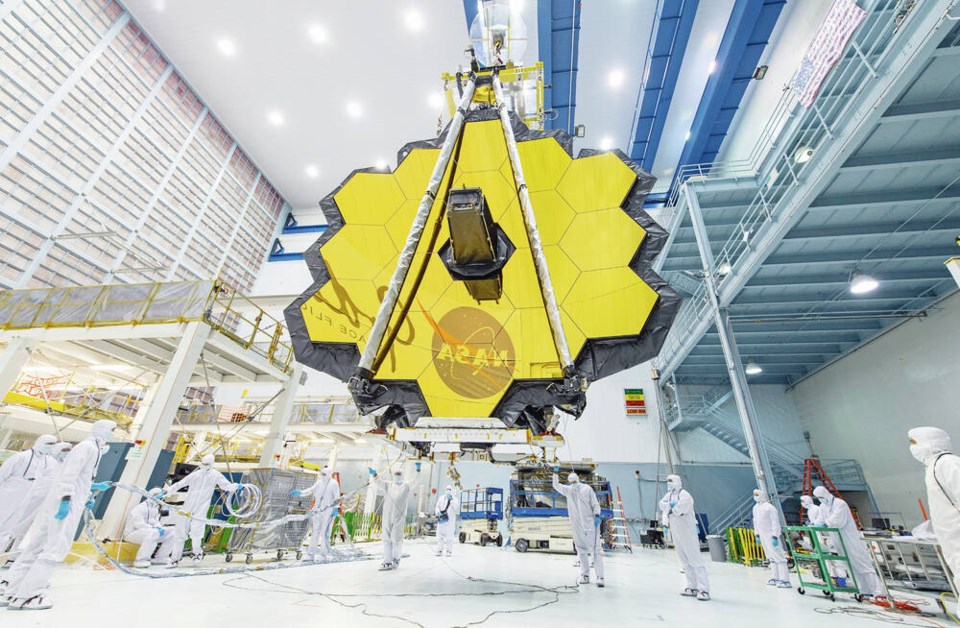On the original Christmas Day, two millennia ago, a group of wise men looked up and saw a star in the east.
That “star” reappeared this Christmas Day, when the James Webb Space Telescope blasted off from the European Space Agency spaceport in Kourou, French Guiana, and headed skyward.
The $10-billion Webb telescope is the most powerful such instrument ever launched. Its light-gathering power is seven times that of the Hubble telescope.
If all goes well, it will see back in time to very near the beginnings of the universe. “Back in time,” because the light Webb gathers took nearly all of the universe’s 13.5 billion years in existence to reach us. We will be literally standing on the threshold of creation.
I say “If all goes well” because who can forget the gigantic screw-up that nearly wrecked the Hubble telescope. When its mirrors were being polished, somebody mis-set the measuring device that controlled the grinding.
Although the mirror’s surface was out by less than one-50th the thickness of a human hair, the images it sent back to Earth were a fuzzy mess. The problem was fixed by flying a space mission to the telescope and attaching software that reversed the grinding error.
So far, nothing of the sort has happened to the Webb telescope. Once in orbit, its lens cover opened perfectly.
Better still, the European Space Agency’s Ariane 5 rocket performed more efficiently than expected. That leaves Webb with enough extra fuel to significantly extend its life expectancy before servicing is needed.
Webb is an international collaboration between NASA, the European Space Agency and the Canadian Space Agency (CSA). Canadian scientists contributed a guidance sensor used to keep the telescope on target. The CSA also produced an infrared imager that will enable the telescope to determine the composition of planetary atmospheres and observe distant galaxies.
These contributions entitle Canadian researchers to a guaranteed share of the images Webb collects.
The telescope itself is an astonishing accomplishment. It has a 6.5-metre-wide mirror made up of 18 gold-coated segments, each of which can be focused independently.
To protect it from the sun’s heat, it deploys a tennis-court-sized sun shield. To get that onboard, the shield had to be folded like an origami model. To give the telescope additional reach, it will orbit around a point in space 1.5 million kilometres from Earth. That lifts it free of any interference from our planet’s atmosphere.
Webb’s mission is simple: See farther out than any telescope has ever seen before.
Search for the first stars and galaxies to emerge after the Big Bang.
And examine the potential for life to exist on distant planets. The CSA’s infrared imager was designed with this in mind.
At a period in our lives when the fabric of society is being torn at by COVID outbreaks and divisive political ideologies, it’s heartwarming to know that a different kind of fabric — the fabric of the universe around us — is being revealed with greater clarity than ever before achieved.



